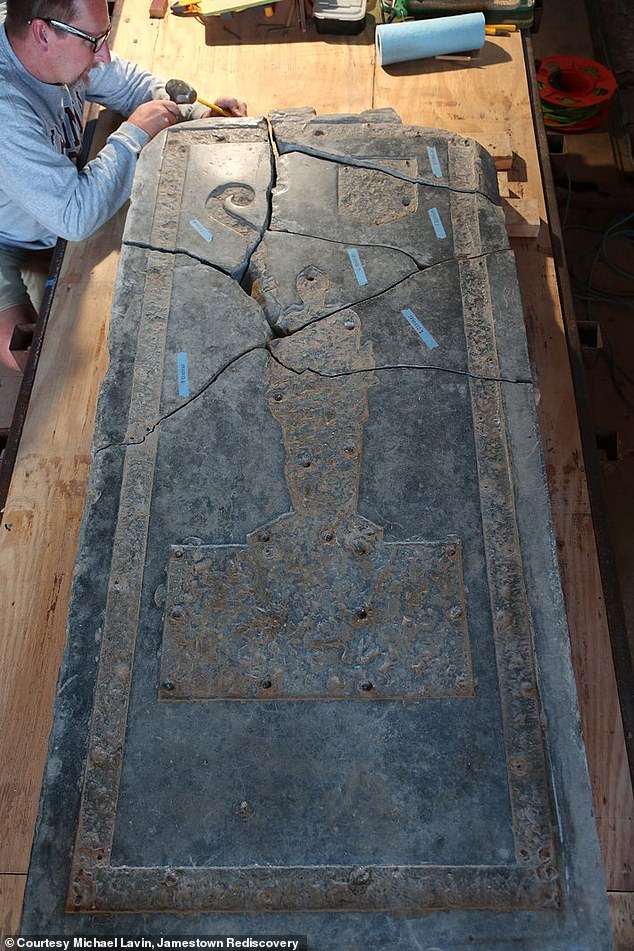The oldest known headstone in America, long believed to mark the grave of a gentleman, has a fascinating history that has finally been unraveled.
The tombstone, unearthed in the Chesapeake Bay region, was believed to be made of “black marble,” but this has now been found not to be the case.
In fact, it is fine-grained black limestone, polished to resemble marble; the stone itself dates back to 1627 and arrived across the Atlantic from Belgium.
The truth has been revealed thanks to a new study in the International Journal of Historical Archaeology.
The new details came to light after tiny fossils were found embedded in the stone, while the stone was in fact connected to an English knight who had been present in Jamestown, Virginia.
A tombstone found inside Jamestown Church featuring the silhouette of a knight is believed to have belonged to Sir George Yeardly, a colonial governor of Virginia.
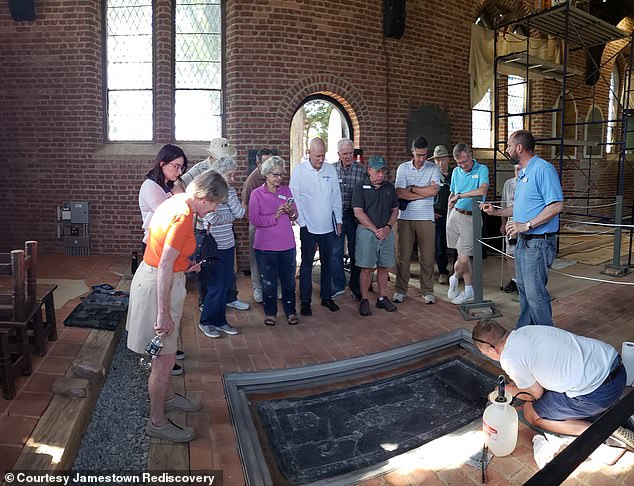
Known as the “Black Marble Knight’s Tombstone,” the headstone was originally placed in a Jamestown church in 1617.
Known as the “Black Marble Knight’s Tombstone,” the headstone was originally placed in a Jamestown church in 1617.
The shiny, black, polished surface was adorned with brass inlays and possibly depicted a knight holding a sword.
The shiny black stone was especially sought after among the English upper class in the 17th century and is the only known gravestone in the English colonies with engraved brass inlays.
The unusual design would have been appropriate for someone of nobility, while researchers also believe it could have marked the burial place of Sir George Yeardley, one of two English knights who died around that time.
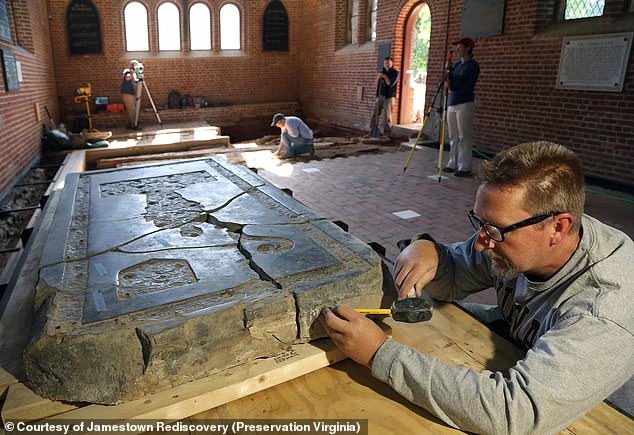
The tombstone, unearthed in the Chesapeake Bay region, was believed to be made of “black marble,” but this has now been found not to be the case.
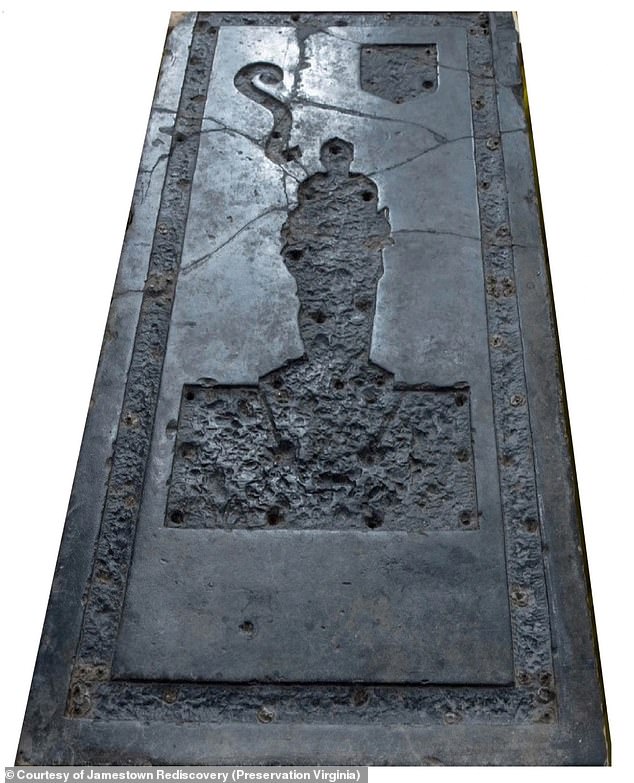
The headstone is not marble, but fine-grained black limestone, polished to look like marble; the stone itself dates to 1627 and was shipped across the Atlantic from Belgium.
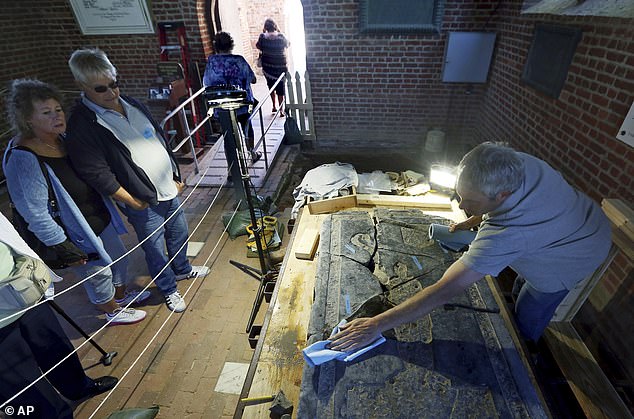
Jamestown archaeologists have unearthed a confusing historical puzzle dating back 400 years
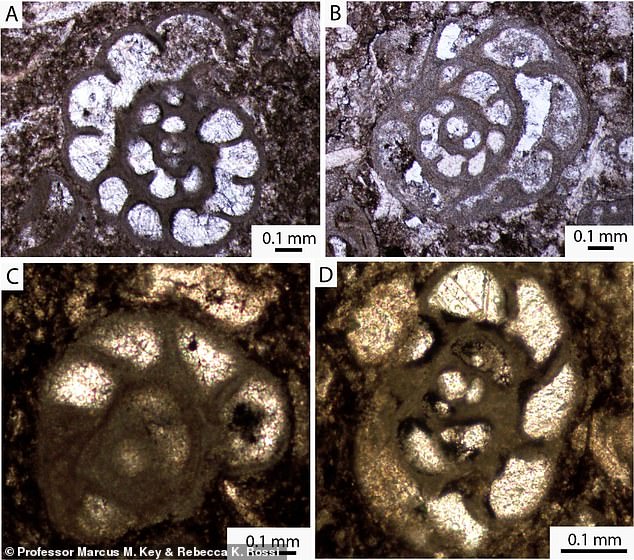
Four species of microfossils were found in the thin sections of the knight’s gravestone. They were found in what is now Belgium and Ireland, rather than North America, meaning the knight’s gravestone had to have been imported from Europe.
To solve the mystery of the tombstone’s origin, researchers were able to analyze the fossil fragments and found six species of single-celled organisms that only existed together in Ireland and Belgium and not in North America.
That discovery, combined with historical records, led archaeologists to conclude that the stone was imported from Belgium and is evidence of a vast colonial trade network across the Atlantic.
Markus Key, one of the study’s authors, said it appeared the settlers ordered luxury tombstones from Europe.
“The knight’s tombstone must have been imported from Europe. Historical evidence suggests it was from Belgium, from where it was transshipped to London and then to Jamestown,” the authors wrote in the study.
“We didn’t realize that settlers were ordering black marble headstones from Belgium like we order items from Amazon, but much slower,” said Markus Key, co-author of the study. Phys.org website.
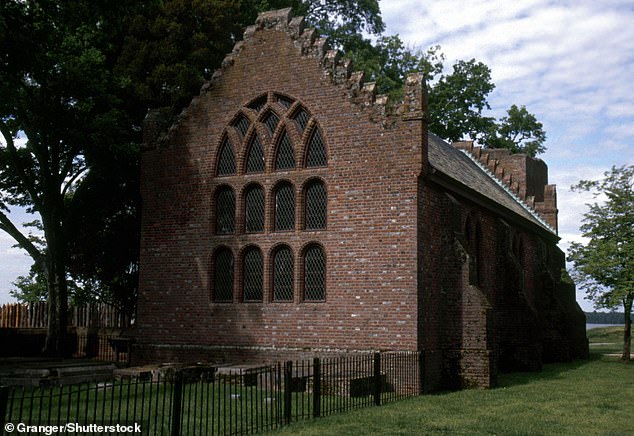
The tombstone was placed in the church in 1617. The church has been rebuilt several times.
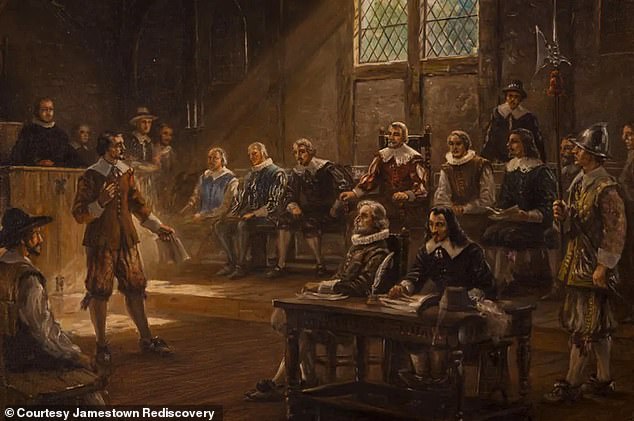
The headstone is believed to be that of Governor George Yeardley, seated in red. Pictured is the first U.S. General Assembly
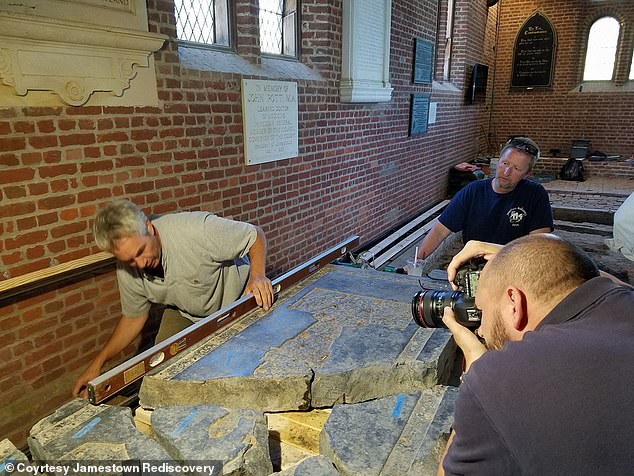
Conservator Jonathan Appell is putting the first pieces of the “Knight’s Gravestone” back together. The gravestone was first discovered broken in 1901.
“The cost of importing the stone to Jamestown, even using it as ballast, would have greatly increased the cost of the stone itself, the carving of the brass inlays, and the fabrication and assembly of the brass inlays,” the authors explained in the study.
‘Whoever was buried under the gentleman’s tombstone was a prominent member of the Jamestown settlement.’
The tombstone was lost for centuries before being rediscovered in 1901 and restored before being placed in the Memorial Church in Jamestown, Virginia, during its construction in 1906.
Despite new insights into its origin, the identity of the person buried beneath remains shrouded in mystery.
But one thing is clear: whoever they were, their legacy was great enough to merit a tombstone imported from Europe, nearly four centuries ago.


